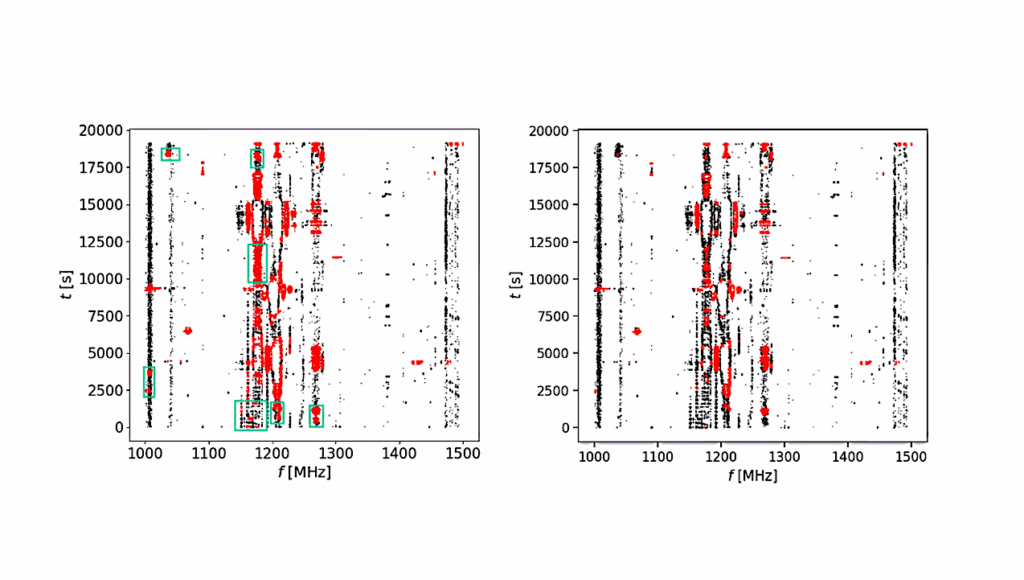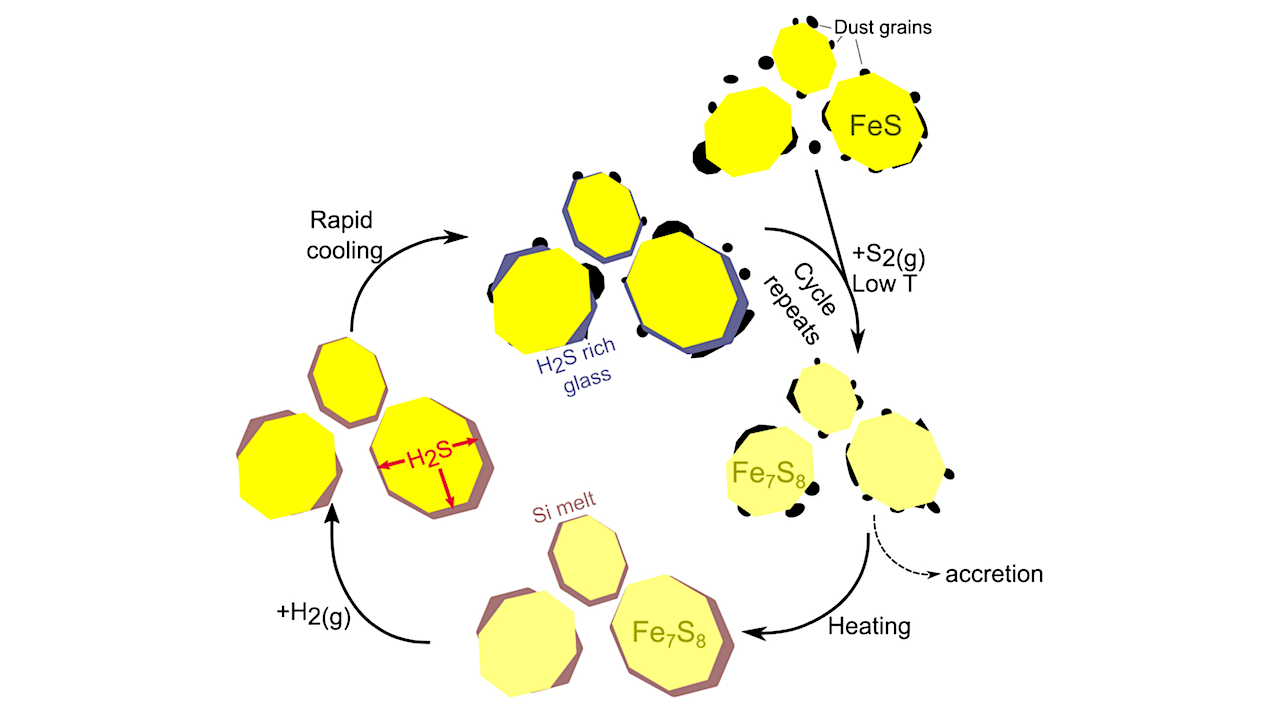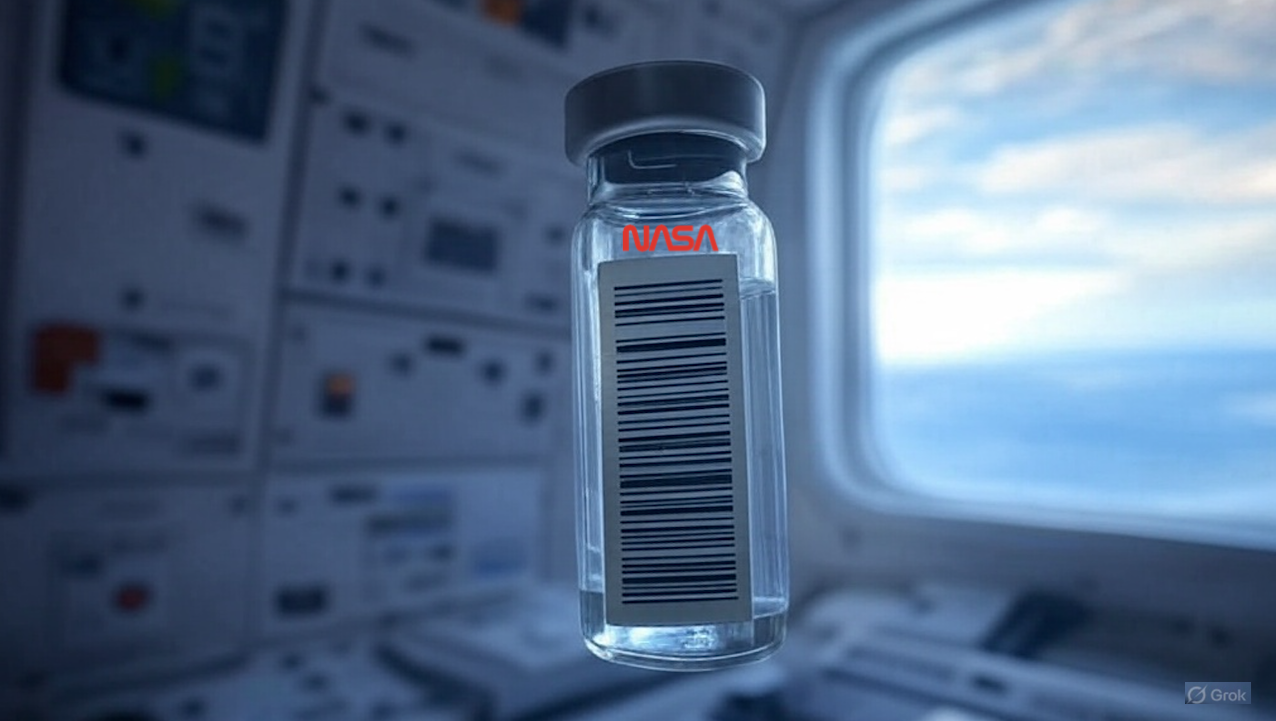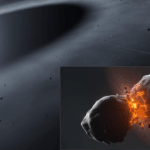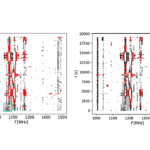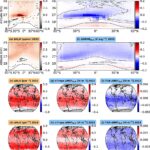Now Reading: De-jittering Ariel: An Optimized Algorithm
-
01
De-jittering Ariel: An Optimized Algorithm
De-jittering Ariel: An Optimized Algorithm
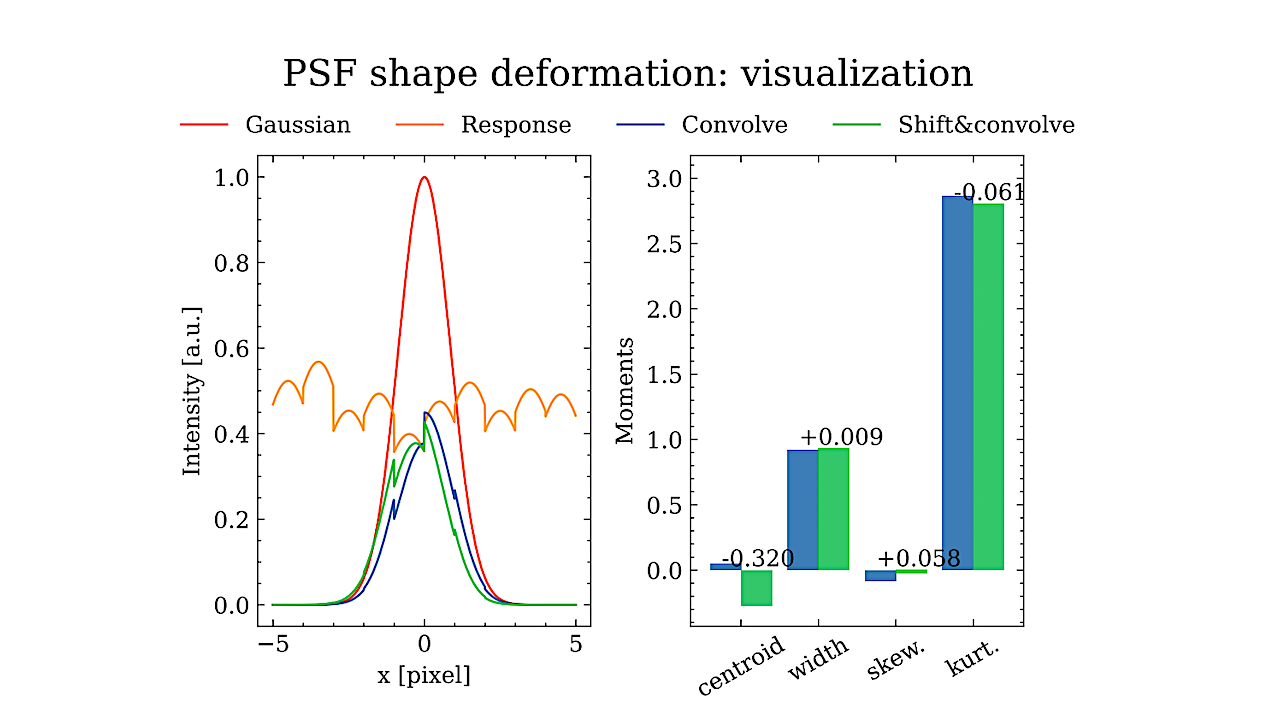

Visualization of the shape deformation of the PSF due to the combination of jitter movements and focal plane imperfections. Left panel: The PSF is represented with a Nyquist-sampled Gaussian profile (red curve). The illumination profiles before and after the jitter (sub-pixel shift of -0.3 pixels) are obtained by convolving the Gaussian profile with the pixel IPRF and multiplying by the QE. The product of the QE and IPRF is shown in the orange pixel responsivity curve for reference. Right panel: bar plot of the first order moments of the illumination profile before and after the jitter shift, using the same colors. The variation in the moments from the initial position is reported on top of the bars of the shifted profile. — astro-ph.EP
The European Space Agency’s Ariel mission, scheduled for launch in 2029, aims to conduct the first large-scale survey of atmospheric spectra of transiting exoplanets.
Ariel achieves the high photometric stability on transit timescales required to detect the spectroscopic signatures of chemical elements with a payload design optimized for transit photometry that either eliminates known systematics or allows for their removal during data processing without significantly degrading or biasing the detection. Jitter in the spacecraft’s line of sight is a source of disturbance when measuring the spectra of exoplanet atmospheres.
We describe an improved algorithm for de-jittering Ariel observations simulated in the time domain. We opt for an approach based on the spatial information on the Point Spread Function (PSF) distortion from jitter to detrend the optical signals.
The jitter model is based on representative simulations from Airbus Defence and Space, the prime contractor for the Ariel service module. We investigate the precision and biases of the retrieved atmospheric spectra from the jitter-detrended observations. At long wavelengths, the photometric stability of the Ariel spectrometer is already dominated by photon noise.
Our algorithm effectively de-jitters both photometric and spectroscopic data, ensuring that the performance remains photon noise-limited across the entire Ariel spectrum, fully compliant with mission requirements. This work contributes to the development of the data reduction pipeline for Ariel, aligning with its scientific goals, and may also benefit other astronomical telescopes and instrumentation.
Andrea Bocchieri, Lorenzo V. Mugnai, Enzo Pascale, Andreas Papageorgiou, Angele Syty, Angelos Tsiaras, Paul Eccleston, Giorgio Savini, Giovanna Tinetti, Renaud Broquet, Patrick Chapman, Gianfranco Sechi
Comments: 26 pages, 8 figures, accepted in Experimental Astronomy
Subjects: Earth and Planetary Astrophysics (astro-ph.EP); Instrumentation and Methods for Astrophysics (astro-ph.IM)
Cite as: arXiv:2504.12907 [astro-ph.EP] (or arXiv:2504.12907v2 [astro-ph.EP] for this version)
https://doi.org/10.48550/arXiv.2504.12907
Focus to learn more
Submission history
From: Andrea Bocchieri Dr
[v1] Thu, 17 Apr 2025 12:55:46 UTC (3,605 KB)
[v2] Fri, 18 Apr 2025 13:45:10 UTC (1,073 KB)
https://arxiv.org/abs/2504.12907
Astrobiology, astronomy,
Stay Informed With the Latest & Most Important News
Previous Post
Next Post
-
 01From Polymerization-Enabled Folding and Assembly to Chemical Evolution: Key Processes for Emergence of Functional Polymers in the Origin of Life
01From Polymerization-Enabled Folding and Assembly to Chemical Evolution: Key Processes for Emergence of Functional Polymers in the Origin of Life -
 02Panasonic Leica Summilux DG 15mm f/1.7 ASPH review
02Panasonic Leica Summilux DG 15mm f/1.7 ASPH review -
 03Two Black Holes Observed Circling Each Other for the First Time
03Two Black Holes Observed Circling Each Other for the First Time -
 04How New NASA, India Earth Satellite NISAR Will See Earth
04How New NASA, India Earth Satellite NISAR Will See Earth -
 05And Thus Begins A New Year For Life On Earth
05And Thus Begins A New Year For Life On Earth -
 06Astronomy Activation Ambassadors: A New Era
06Astronomy Activation Ambassadors: A New Era -
07SpaceX launch surge helps set new global launch record in 2024













